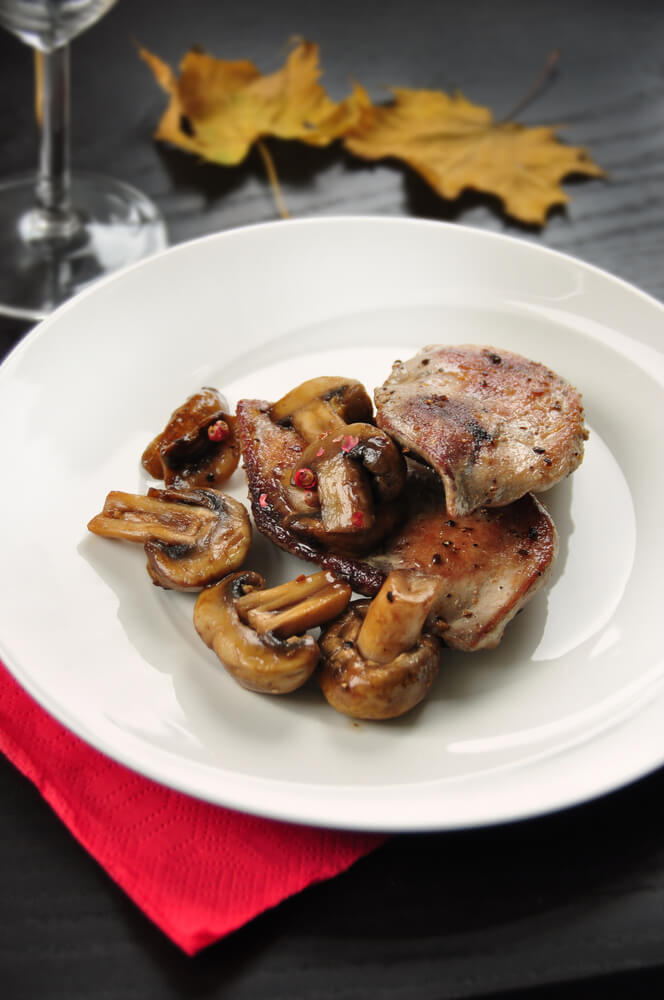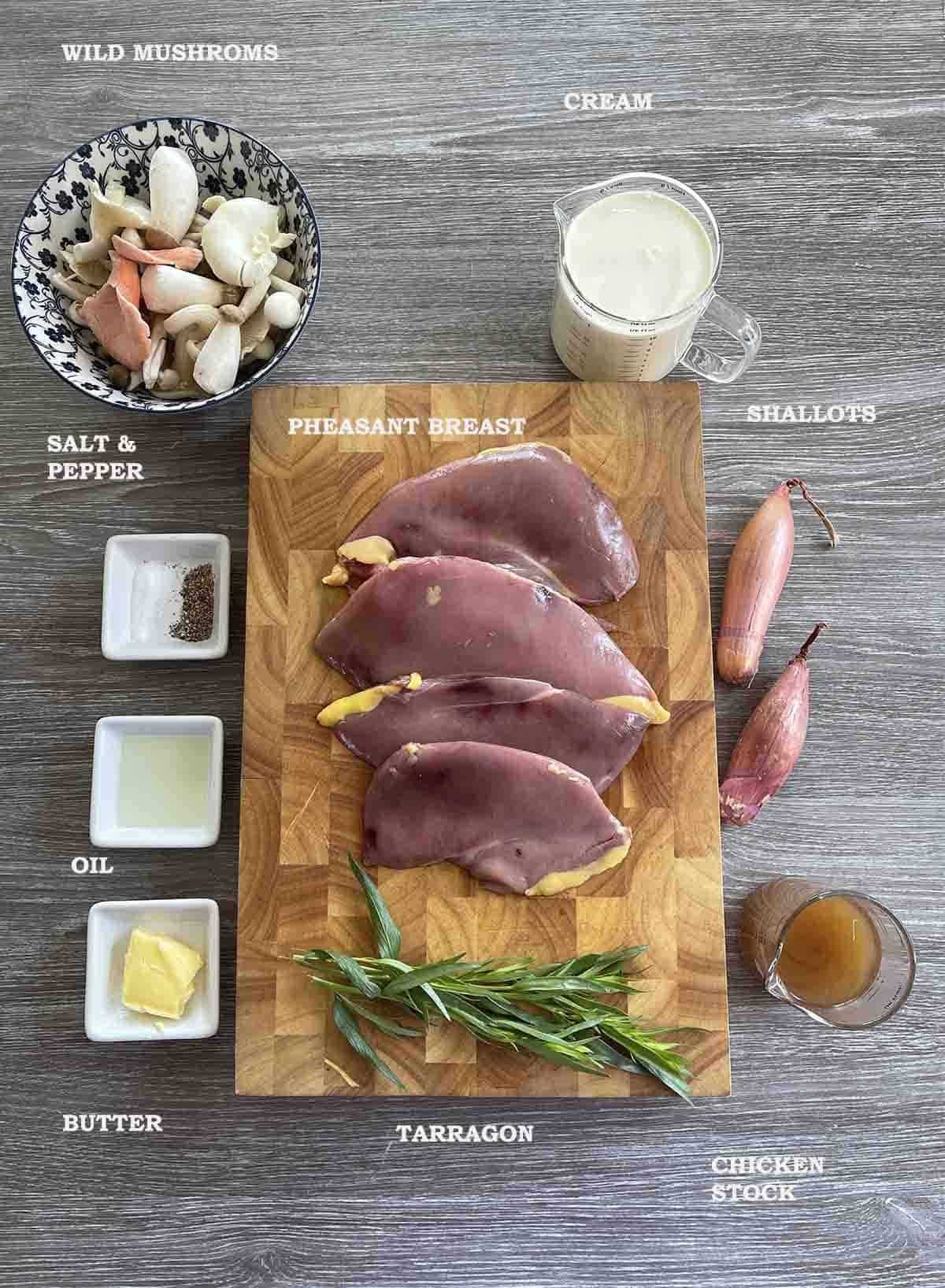How To Bake Pheasant Breast
As a professional chef, I am constantly seeking new and exciting ways to elevate my culinary creations. Today, I want to share with you a magnificent dish that will impress even the most discerning palates: baked pheasant breast. This exquisite poultry delicacy offers a unique and delicate flavor that is not easily replicated. Whether you are a seasoned chef or an adventurous home cook, join me as we embark on a culinary journey, exploring the art of baking pheasant breast. Get ready to tantalize your taste buds and impress your guests with this elegant and flavorful dish. So, put on your apron, preheat your oven, and let’s dive into the world of pheasant perfection!
How to Bake Pheasant Breast: A Tender Delight
Indulge in the rich flavors of pheasant breast with this exquisite recipe. Baking the pheasant breast ensures a succulent and tender result that will leave you craving for more. Follow these step-by-step instructions to create a delectable dish that will impress your guests and tantalize your taste buds.
Ingredients:
- 4 pheasant breasts
- 2 tablespoons olive oil
- 1 tablespoon fresh thyme leaves
- 1 tablespoon fresh rosemary leaves
- Salt and pepper to taste
- 4 cloves garlic, minced
- 1 lemon, sliced
- 4 tablespoons unsalted butter
- 1 cup chicken broth
General Information:
- Making Difficulties: Moderate
- Preparation Time: 15 minutes
- Cooking Time: 30 minutes
- Serves: 4
Instructions:
Step 1: Prepare the Pheasant Breast
Preheat your oven to 375°F (190°C). Rinse the pheasant breasts under cold water and pat them dry with a paper towel. Season the breasts generously with salt and pepper on both sides.
Next, in a small bowl, combine the minced garlic, fresh thyme leaves, and fresh rosemary leaves. Rub this mixture over the seasoned pheasant breasts, ensuring they are well coated.
Step 2: Sear the Pheasant Breasts
In a large oven-safe skillet, heat the olive oil over medium-high heat. Once the oil is hot, add the pheasant breasts to the skillet and sear them for about 2-3 minutes on each side, until they are golden brown. This will help seal in the flavors and give the breasts a beautiful crust.
Once seared, remove the pheasant breasts from the skillet and set them aside on a plate. Keep the skillet on the stove as you will be using it later.
Step 3: Add Flavor and Moisture
Return the skillet to medium heat and add the butter. Once melted, add the lemon slices to the skillet. Cook the lemon slices for about a minute on each side until they release their juices and become slightly caramelized.
Now, pour the chicken broth into the skillet and stir it gently to combine with the butter and lemon juices. Let the mixture simmer for a few minutes until it thickens slightly and develops a flavorful sauce.
Step 4: Bake the Pheasant Breasts
Place the seared pheasant breasts back into the skillet, nestled among the lemon slices. Transfer the skillet to the preheated oven and bake for approximately 15-20 minutes, or until the internal temperature of the breasts reaches 165°F (74°C). Baking the pheasant breasts will ensure they cook evenly and remain moist and tender.
While the pheasant breasts are baking, baste them with the pan juices every 5 minutes to infuse them with additional flavor and moisture.
Step 5: Rest and Serve
Once cooked, remove the skillet carefully from the oven and allow the pheasant breasts to rest for a few minutes. This resting period allows the juices to redistribute throughout the meat, resulting in a more tender and juicy final dish.
When ready to serve, spoon some of the pan juices over the breasts for added moisture and flavor. Accompany the pheasant breasts with your choice of side dishes such as roasted potatoes, steamed vegetables, or a fresh salad.
Step 6: Presentation and Garnish
To elevate the presentation of your dish, garnish the pheasant breasts with some fresh herbs, such as thyme or rosemary sprigs. The vibrant green colors and aromatic scents will add an enticing touch to your masterpiece.
Step 7: Enjoy the Delectable Dish
Slice into the pheasant breasts and savor the succulent meat with its delicate flavors. Allow the combination of the garlic, herbs, and lemon to dance on your palate, creating a harmonious symphony of taste. Share this delightful dish with loved ones and relish in the joy of creating a remarkable culinary experience.
Become the master of baking pheasant breasts with this straightforward recipe. Whether you’re an experienced chef or a passionate home cook, this dish will captivate your senses and leave you yearning for more. So, get your apron on, gather the ingredients, and embark on a culinary adventure that will reward you with a tender delight that is sure to impress.

Important Things to Keep in Mind: How to Bake Pheasant Breast
Introduction:
Cooking pheasant breast can be a delightful culinary adventure, offering a delicious and unique alternative to traditional meats. Whether you’re a seasoned chef or a home cook looking to impress, mastering the art of baking pheasant breast is a skill worth honing. To ensure your dish is a triumph every time, here are some important things to keep in mind.
1. Choose Fresh and High-Quality Pheasant Breast:
The key to a succulent and flavorful pheasant breast dish starts with selecting the right cut. Look for fresh, plump breasts that are firm to the touch and free of any unpleasant odors. When buying pheasant breasts, opt for those sourced from reputable suppliers or local farms. Freshness is crucial in preserving the taste and tenderness of the meat.
2. Properly Store and Prepare the Meat:
To maintain the quality of your pheasant breast, proper storage and preparation are essential. Upon bringing them home, immediately refrigerate the breasts and consume them within two days. Remove any excess moisture from the meat before cooking by patting it dry with paper towels. This will ensure a better sear and prevent the meat from becoming bland or watery.
3. Enhance the Flavor with a Marinade or Seasoning:
Pheasant breast has a delicate flavor that can be enhanced with the right marinade or seasoning. Infuse the meat with your choice of herbs, spices, and aromatics to add depth and complexity. A simple marinade of olive oil, garlic, lemon zest, and thyme works wonders, or try a dry rub of smoked paprika, cumin, and brown sugar for a more robust flavor profile. Marinate the breasts for at least 30 minutes, but no more than 4 hours, to avoid over-seasoning.
4. Pay Attention to Cooking Time and Temperature:
To achieve perfectly cooked pheasant breast, it’s crucial to pay close attention to cooking time and temperature. Overcooking can result in dry and tough meat, while undercooking can pose health risks. Preheat your oven to 375°F (190°C) and bake the breasts for approximately 20 to 25 minutes, or until the internal temperature reaches 165°F (74°C). Consider using a meat thermometer to ensure accuracy, as the cooking time may vary depending on the thickness of the breasts.
In conclusion, baking pheasant breast is a culinary delight that requires attention to detail and technique. Remember to choose fresh and high-quality meat, properly store and prepare it, and enhance the flavor with a well-crafted marinade or seasoning. Lastly, be mindful of the cooking time and temperature to achieve the perfect balance of tenderness and succulence. With these important points in mind, you can confidently enjoy a delectable pheasant breast dish that will leave your taste buds singing.
Frequently Asked Questions
Here are some commonly asked questions about baking pheasant breast:
1. Can I bake pheasant breast without marinating it first?
While marinating can enhance the flavor, it is not necessary for baking pheasant breast. If you prefer a simpler preparation, you can season the breast with herbs, salt, and pepper just before baking. This will still result in a delicious and tender dish.
However, marinating the pheasant breast overnight in a mixture of herbs, spices, and acidity like lemon juice or vinegar can help tenderize the meat and infuse it with additional flavors. It’s a matter of personal preference and the time you have available.
2. What temperature should I bake pheasant breast at?
The recommended temperature for baking pheasant breast is 350°F (175°C). This moderate heat allows the meat to cook evenly and retain its tenderness. It is important to avoid overcooking to prevent the breast from becoming dry.
It’s a good practice to use a meat thermometer to check the internal temperature. The breast is cooked and safe to eat when the thermometer registers 165°F (74°C). Remember to insert the thermometer into the thickest part of the breast without touching the bone.
3. How long should I bake pheasant breast for?
The cooking time for pheasant breast depends on the thickness of the meat. As a general guideline, you should bake it for about 20-25 minutes. However, it’s essential to check the internal temperature using a meat thermometer to ensure it reaches 165°F (74°C).
If the pheasant breast is particularly large or thick, it may require a longer cooking time. It’s always better to slightly undercook it and allow it to rest for a few minutes before serving. The residual heat will continue cooking the meat, resulting in a perfectly moist and tender texture.
4. Should I cover the pheasant breast while baking?
It is not necessary to cover the pheasant breast while baking. Leaving it uncovered allows the heat to circulate evenly around the meat, promoting proper browning and a delicious crust. However, if you notice the breast is browning too quickly or becoming dry, you can tent it loosely with aluminum foil during the last part of the cooking process.
Remember to remove the foil for the final few minutes to allow the breast to develop a beautiful golden-brown color. This will also help to crisp up the skin, if you choose to keep it on.
5. How do I know when the pheasant breast is cooked perfectly?
The best way to determine if the pheasant breast is cooked to perfection is by using a meat thermometer. When it reaches an internal temperature of 165°F (74°C), it is cooked and safe to eat. Insert the thermometer into the thickest part of the breast without touching the bone.
Additionally, if the meat feels firm but still slightly springy to the touch and the juices run clear when you pierce it with a fork, these are indicators that your pheasant breast is cooked perfectly. It’s important not to overcook the meat to prevent it from becoming dry and tough.

PHEASANT 101 – how to cook pheasant with The Sporting Chef
In conclusion, mastering the art of baking pheasant breast can elevate your culinary skills to new heights. With its succulent meat and delicate flavors, this dish is sure to impress even the most discerning palates. By following the step-by-step instructions and incorporating your own creative twists, you can create a masterpiece that showcases your expertise as a professional chef. So don your chef’s hat, sharpen your knives, and embark on this culinary adventure. With practice and passion, you’ll soon be creating unforgettable pheasant breast dishes that will leave your guests craving for more. Happy baking!
